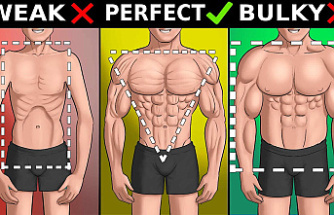In the comfort of our own homes, we find solace and sanctuary, but it is also where the vast majority of accidents occur. From minor mishaps to potentially life-threatening incidents, the domestic environment can become a battlefield of unforeseen challenges.
Being prepared to respond quickly and effectively in such situations can make a significant difference between life and death. While most people associate first aid training for professional reasons, there are numerous advantages to learning first aid at home.
In this article, we will explore nine compelling reasons why acquiring basic first aid skills can be a valuable and life-saving investment.
Immediate Response to Emergencies
Accidents can occur unexpectedly, and a swift response is crucial to prevent the situation from worsening. By learning first aid at home, you can equip yourself with essential skills and knowledge to react promptly in case of emergencies. Whether it's a minor cut or a more serious injury, knowing how to apply basic first aid can stabilize the victim until professional medical help arrives. This prompt intervention can prevent further harm and improve the chances of a full recovery.
Preventing Further Harm
In many emergency situations, the actions taken in the initial moments can significantly affect the outcome. Learning lifesaving skills through a first aid course equips individuals with the skills to assess the situation and take appropriate measures to prevent further harm. From proper wound care to immobilizing fractures, these essential skills can mitigate the risks associated with accidents, ensuring a quicker and smoother recovery process for the injured party.
Creating A Safety-Conscious Environment
Knowledge of first aid fosters a safety-conscious mindset within the household. As individuals learn about potential hazards and preventive measures, they become more proactive in creating a safe living environment. Identifying and addressing common risks, such as slippery surfaces, faulty wiring, or dangerous objects within reach, becomes second nature. Consequently, the home transforms into a sanctuary where family members can feel secure and protected from avoidable accidents.
Empowering Family Members
When multiple family members are trained in a formal first aid course, the entire household becomes a safety net. Learning first aid together fosters a sense of empowerment and shared responsibility for each other's well-being. Children, too, can benefit from age-appropriate first aid training, empowering them to act responsibly in emergencies and potentially save lives. This shared knowledge strengthens family bonds and creates a sense of unity in the face of potential crises.
Bonding and Family Preparedness
Learning first aid as a family can be an excellent bonding experience. Involving family members in first aid training fosters a sense of responsibility and preparedness within the household. It encourages open communication about safety, health concerns, and the importance of looking out for one another. Additionally, with everyone trained in a first aid course, you can create a more secure and prepared family unit, ready to tackle emergencies as a team.
Handling Common Home Injuries
The home is rife with potential injury risks, ranging from small cuts and burns to sprains and strains. Learning first aid equips individuals with the know-how to address these common injuries effectively. By administering the appropriate first aid measures, individuals can provide immediate relief and comfort to the injured party, ensuring a smooth and speedy recovery process.
Enhanced Child Safety
For families with young children, learning first aid is especially valuable. Children are curious and may encounter accidents more frequently. Equipping parents and caregivers with first aid skills ensures that they can provide immediate care in the event of an injury, ensuring the safety and well-being of their little ones.
Quick Response During Natural Disasters
Natural disasters can strike without warning, leaving communities isolated and without immediate access to medical services. Knowing first aid at home can be invaluable during such times. Whether it's administering CPR, treating wounds, or dealing with shock, your skills can make a significant difference in saving lives until professional help arrives. Being prepared for emergencies during disasters can contribute to community resilience and enhance overall disaster response efforts.
Contributing to Community Safety
Beyond the home's confines, the knowledge of first aid can extend its benefits to the broader community. Trained individuals can become the first responders during accidents or emergencies in their neighborhood, offering valuable assistance until professional medical help arrives. By taking proactive steps to make their homes safer and learning first aid, individuals become responsible citizens who contribute to creating a safer community for everyone.
The Takeaway
Learning first aid to make the home safe is an essential investment in the well-being of our loved ones and ourselves. By being equipped with life-saving skills and knowledge, individuals can respond promptly and effectively to emergencies, preventing further harm and fostering a safety-conscious living environment. From handling common home injuries to preparing for natural disasters, the advantages of learning first aid extend far beyond the walls of our homes, making it a crucial and responsible step toward ensuring the safety of our families and communities.
Date Of Update: 28 September 2023, 10:30











